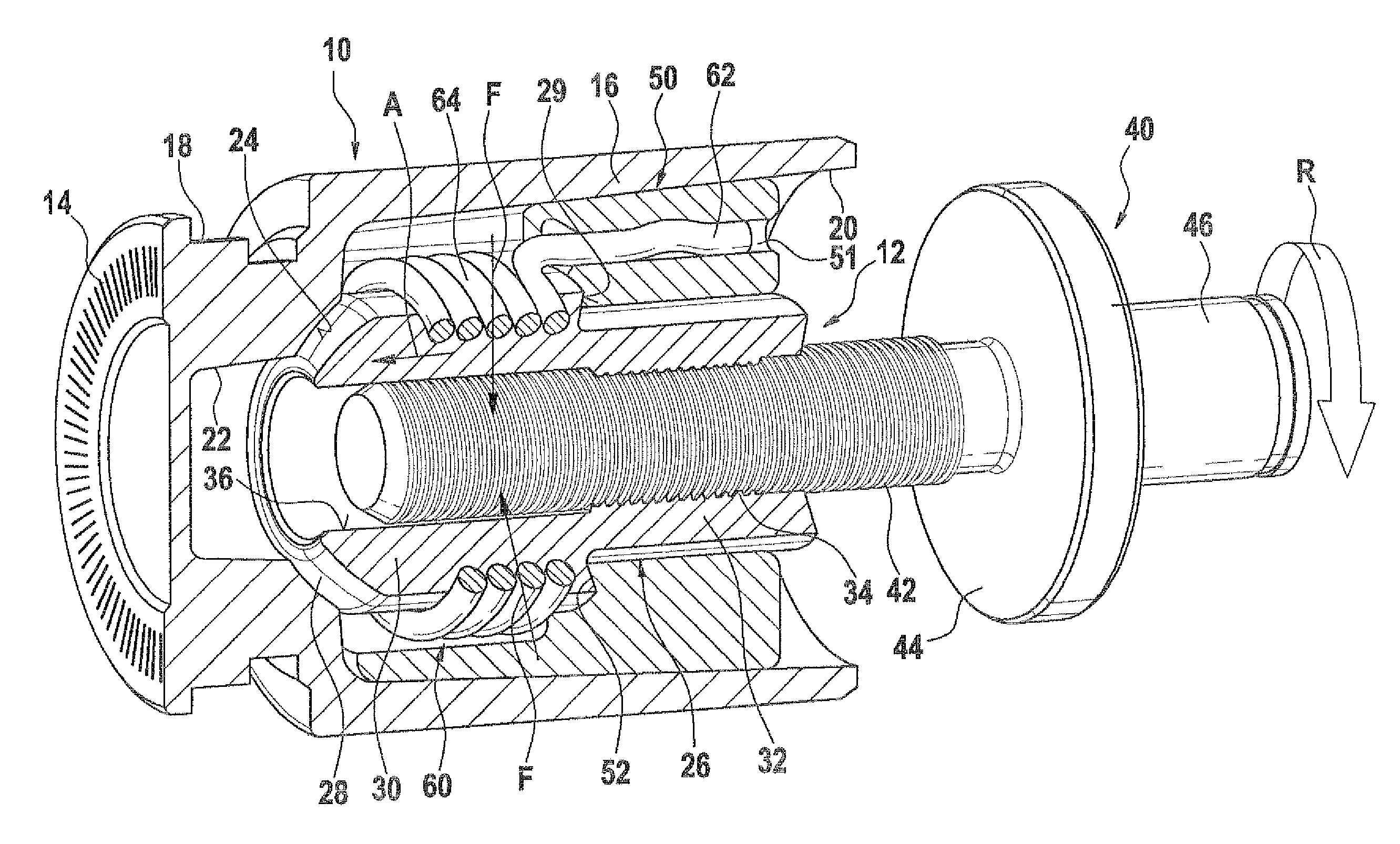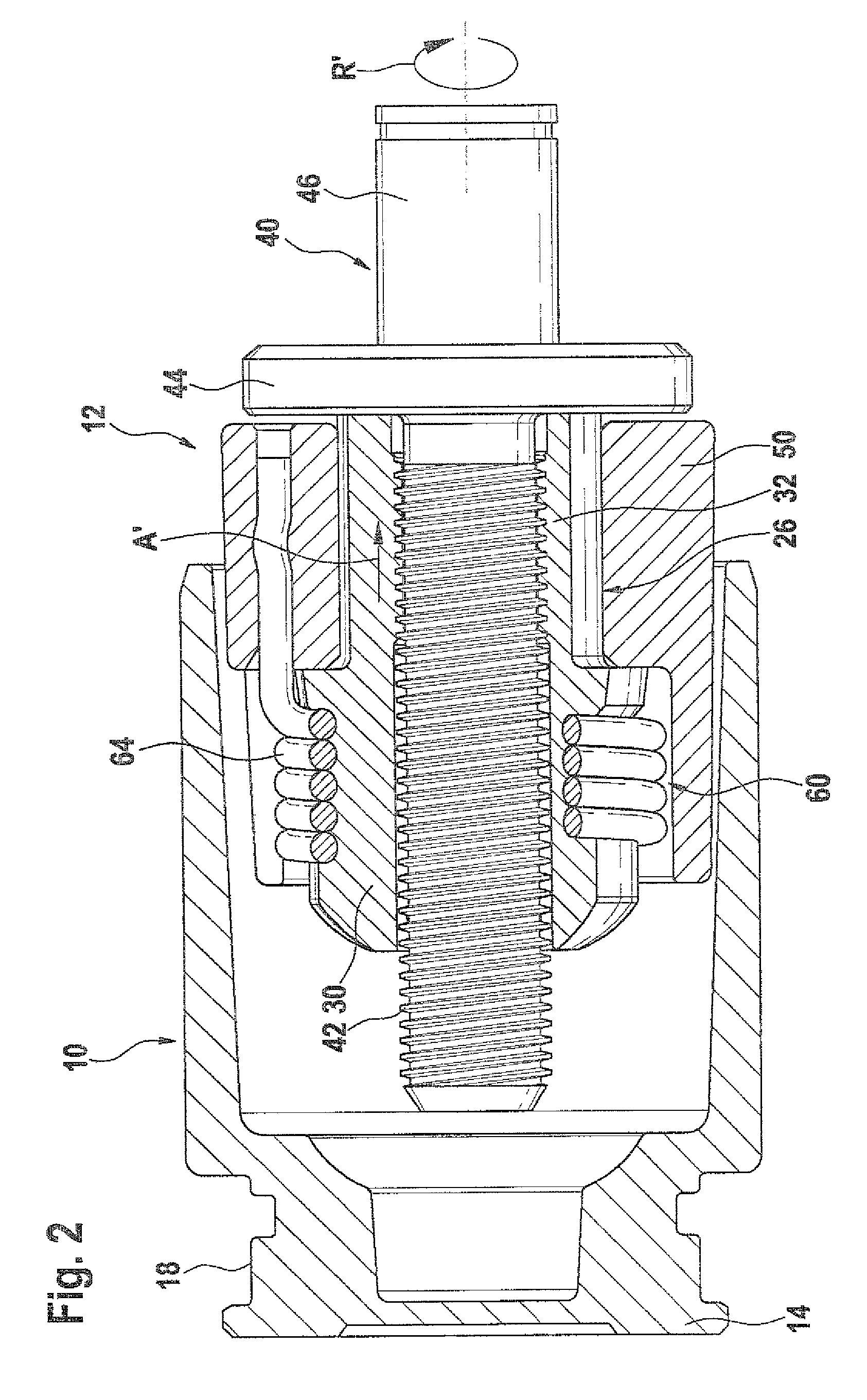Electromechanical locking device for a brake piston
a technology of electronic locking and brake piston, which is applied in the direction of braking systems, friction linings, transportation and packaging, etc., can solve the problems of not satisfying the response performance of such a wheel brake, the hydraulic pressure fluid does not behave ideally incompressibly, and the remaining space inside the brake piston is relatively large, so as to prevent mechanical warping and less hydraulic elasticity , the effect of easy reversibility
- Summary
- Abstract
- Description
- Claims
- Application Information
AI Technical Summary
Benefits of technology
Problems solved by technology
Method used
Image
Examples
Embodiment Construction
[0018]In FIG. 1, a brake piston 10 is shown, with a locking device 12 built into it. The brake piston 10 is a hollow-cylindrical component, which is closed in pressure-fluid-tight fashion on one of its ends by a lining contact plate 14. The lining contact plate 14 and a piston shaft 16 are embodied in one piece with one another, and on the circumference of the brake piston 10, between the lining contact plate 14 and the piston shaft 16, a recess 18 is provided, which has a single perpendicular graduation from the outside inward. The interior of the brake piston 10 is divided into two portions 20, 22 of different inside diameters. A first portion 20, located at the open end of the brake piston 10, has a larger inside diameter than a second portion 22, which is oriented toward the lining contact plate 14 and is connected to the first portion 20. The transition from the first portion 20 to the second portion 22 is embodied as a conical indentation 24. This conical indentation is locate...
PUM
 Login to View More
Login to View More Abstract
Description
Claims
Application Information
 Login to View More
Login to View More - R&D
- Intellectual Property
- Life Sciences
- Materials
- Tech Scout
- Unparalleled Data Quality
- Higher Quality Content
- 60% Fewer Hallucinations
Browse by: Latest US Patents, China's latest patents, Technical Efficacy Thesaurus, Application Domain, Technology Topic, Popular Technical Reports.
© 2025 PatSnap. All rights reserved.Legal|Privacy policy|Modern Slavery Act Transparency Statement|Sitemap|About US| Contact US: help@patsnap.com



